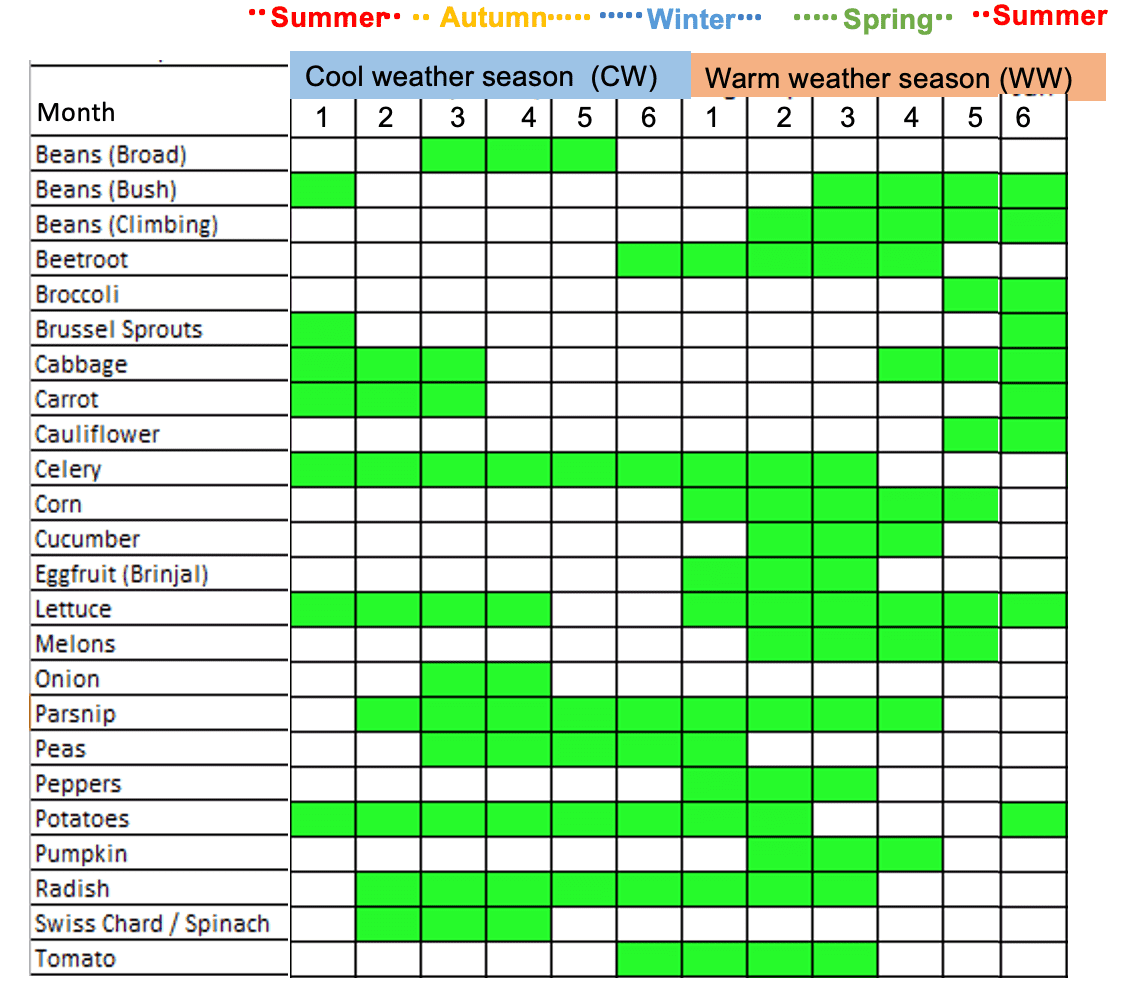Planning
Planning at the start of a season, and after monitoring, is of fundamental importance to successful organic vegetable gardening, and equally important it keeps you in the present looking forward. and transforms gardening from a reactive process to a thoughtful goal-directed process.
The first planning steps are to determine what plants to grow and when to plant them. Fortunately, this information is already out in the public domain.
Mediterranean climates are characterized by dry summers and mild, wet winters and have similar environments worldwide.
There is no real winter in the Western Cape with its Mediterranean climate. Hence, it is possible to grow vegetables throughout the year; consequently the growing seasons can thus be divided into two halves, the warm weather growing season and the cool-weather growing season.
I aim to share my experience and make the site relevant to gardeners in different parts of the world who may be interested. Hence, I have divided the Western Cape planting guide into two sections, a warm-weather season and a cool-weather season, making it easier for gardeners in other parts of the world to relate to the plants I grow.
The planting chart below illustrates this:

However, note warm-weather month 1 (WW 1) is in midwinter when temperatures rise, and cool-weather 1(CW 1) is in midsummer when temperatures start to cool.
Also, the chart is a planting chart, and the growth of plants extends far further into the growing season, allowing gardeners to purchase seedlings and plants later in the growing season.
This system conveniently tracks planting, germination, flowering and fruit production times, etc., without the necessity of referring to the annual seasonal calendars of different parts of the world.
For example, WW, m 3,w 1, or WW 3, 1 and refers to the first week of the third month of a Warm-Weather growing season.
This system is more convenient and accessible than, for example, September 14 of the Western Cape Summer growing season, which is the start of spring, translates to WW 3, 2.
Similarly, for Cool-Weather (CW) seasons, and can be used anywhere in the world to share experiences of growing cool weather vegetables experiences with those in different geographical regions.
Once you know what and when to grow your vegetables, you now need to decide where and in what medium you will grow your plants. The Ecosystem section will help you choose.